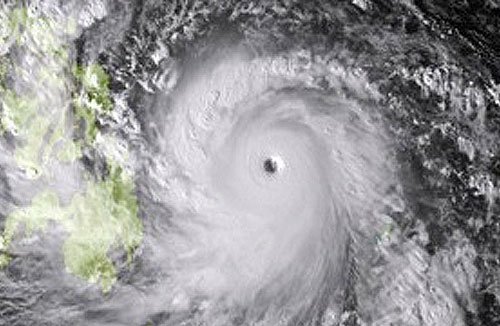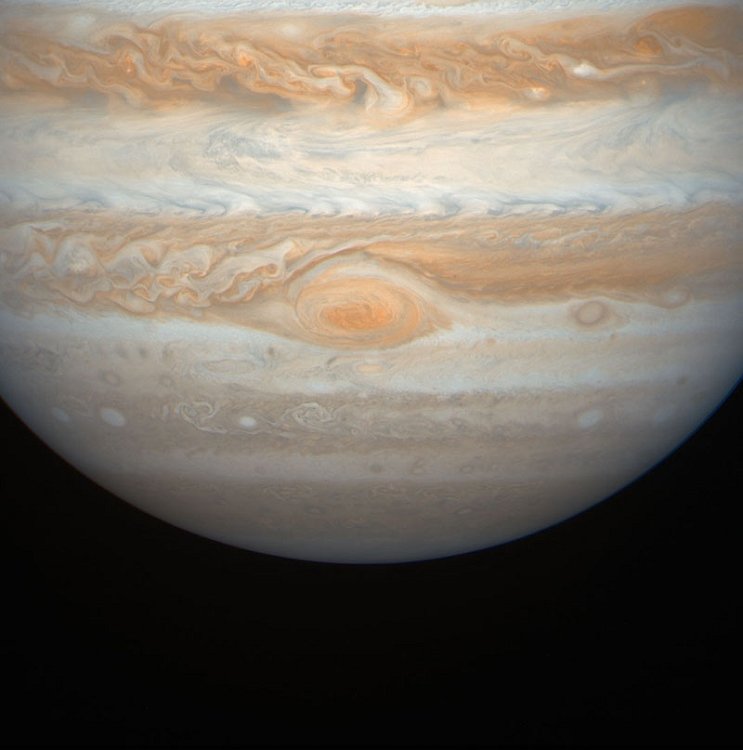Storm in a Teacup

As today is world earth day, I chose to write about a nice paper that came out at the end of last year in which scientists are using a very cool technique to study how the world around us works. Physics Researchers at the University of Bordeaux have developed a very novel way to study the properties of vortices using soap bubbles. A paper published in the open access journal Scientific Reports demonstrated their genius system.
So what can we learn from studying vortices? Well we can actually learn a lot about tropical storms (Hurricanes & Tornadoes), their formation, progression and termination. These tropical storms can be quite devastating, take a look at the image above, this is the perfect example of a tropical storm which is itself a vortex. The example image below is actually the tropical storm Haiyan which caused massive damage and killed many people in the Philippines in late 2013. However, vortices don’t just occur on earth, there are other well-known examples out there in space such as the great red spot on Jupiter or the great dark spot on Neptune. Interestingly, the great red spot on Jupiter has been going for at least 200-300 years, that’s an awful long lifetime for an anticyclone.

I have often heard scientists being referred to as big kids; scientists never seem to grow up and always want to play with new toys, so they are always buying the latest microscope or trying out the newest technology in their field. I think this is undoubtedly the case for this lab. In order to study vortices these scientists are using soap bubbles, the very ones you enjoyed as a child! The difference here is that they are using very sensitive machinery and analysis to study these bubbles. Their system involves creating a half bubble on a platform which can be rotated and heated so that they can measure many different parameters of these vortices such as how they move on the surface of the bubble and where they go. Also, these scientists are interested in learning the speed of these vortices, how fast they move and how fast they rotate.

What they found using their soap bubble model was that these vortices went through periods of intensification, a common occurrence in tropical cyclones. They also found that the duration of these events were quite standard in their bubble model, which is also the case for storms on earth. So the bubble model appears to be an accurate way to model tropical storms on earth.
Of course there are some limitations to this model, vortices which occur on earth such as tropical storms are in a complex, 3-dimensional environment. The soap bubbles are simple 2-D structures with a more or less regular temperature. The vortex on the bubble is only about 0.01 mm in thickness and about 1-2cm in diameter whereas a real tropical storm can be 10 km thick and 1000’s of km in diameter, but as you may have noticed the proportions are similar. We must also take into account that real storms on earth are going through different environments, they might form above the sea or ocean, where they travel towards land, once they reach land these cyclones tend to slow down and dissipate, this is impossible to replicate in the lab at the moment. So while the soap bubble model cannot exactly replicate a tropical storm, it’s one of the best models we have.
Basically this means that the soap bubble could prove to be a good means to study storms and allow us to better anticipate when storms will be at their most intense as well as anticipate where they are going to hit land giving us more time to prepare. This goes to show that it’s not always best to go for extremely complex systems when studying how things work, quite often the most simple model is best and provides lots of information on how the world works.
